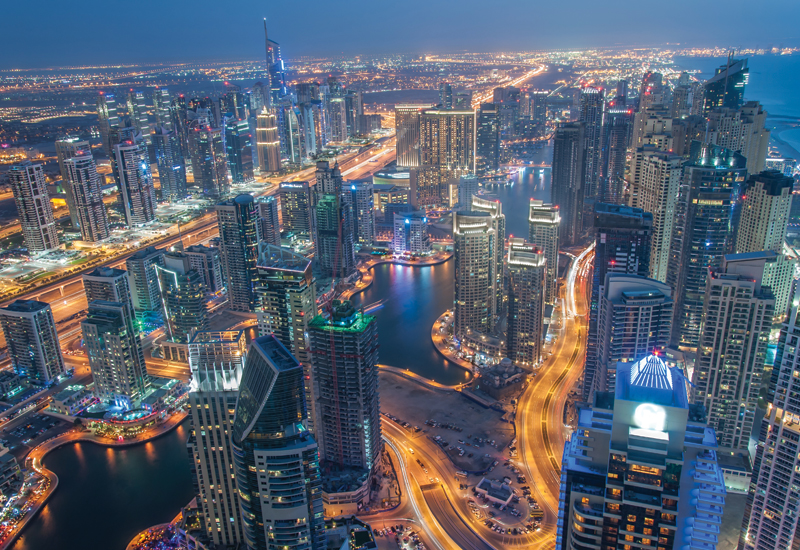Dubai’s Department of Tourism and Commerce Marketing (Dubai Tourism) is sounding confident. And why not? Its recently released annual visitor figures show Dubai attracted 14.9 million overnight visitors in 2016, recording a robust 5% increase over 2015.
In comparison with the rest of the world, there is no surprise at the sentiment that these figures represent stable momentum and the likely attainment of Dubai Tourism’s 2020 goals.
The emirate has seen the opening of numerous luxury properties such as The St. Regis Dubai, W Dubai and Westin at Al Habtoor City, Palazzo Versace Dubai and Jumeirah Al Naseem, contributing to another 5% increase, this time in room supply. The result is the 100,000 room supply mark being reached and passed with a current tally of 102,845 rooms.
No doubt the opening of attractions like IMG Worlds of Adventure, the world’s largest indoor theme park, and Dubai Parks and Resorts, the region’s largest integrated theme park resort, have helped. Dubai Opera was a welcome addition as was City Walk, and His Excellency Helal Saeed Almarri, director general, Dubai Tourism, says the growth through “a period of unforeseen macro-economic upheavals” validates the ability of Dubai’s tourism sector to adapt and respond with agility.
The performance has certainly been impressive; however, a report by Knight Frank stated the UAE’s hospitality market remained subdued in 2016 on the back of weaker macroeconomic conditions, further strengthening of the US dollar and a strong supply pipeline.
Average daily rates (ADR) dropped 12% YTD Nov 2016 compared to the same period in 2015, which resulted in a 12% decline in revenue per available room (RevPAR).
According to a HotStats survey, Dubai hotels achieved an average occupancy of 80.2% in 2016, which is 0.3% higher than 2015. However, the survey also found that average room rates fell 7.8% to $258.5 and the fall in top line revenues had a direct impact on profits, which fell 6.8% to $150.6.
There are many who say these figures are an indication that times are changing within Dubai’s hospitality sector.
TRI Consulting associate director Chris Hewett is assertive when he says the sector “is witnessing a dramatic change”, as the city matures from a luxury destination to a leisure and family mass tourism market.
“To reach the goal of 20 million visitors by 2020, the city needs to achieve an annual visitor growth of 7-8% and this can only be achieved by targeting a wider range of visitors and new source markets,” he asserts. “The rise in strength of the US dollar in 2017 impacted the affordability of Dubai for visitors and when coupled with the change in source markets, result in lower overall revenues and profits compared to 2015.”
Filippo Sona, head of hotels — MENA for Colliers International reveals that Dubai’s hospitality market has seen a slight increase in occupancy (+1.3%) in 2016, “even though there was an influx of 6,700 keys into the market in the same year”. “This reinforces Dubai’s positioning as a tourism hub with continued increase in tourist arrivals and an increase in average length of stay,” he continues. “However, when it comes to ADR, the market has seen a significant dip (-10.2%) in 2016, which can be attributed to the aforementioned increase in supply.”
Debrah Dhugga, managing director, Dukes Dubai and Dukes London explains that while supply increased by an additional 6,700 keys in 2016, the market is “showing great resilience and displaying signs of maturity”.
“These figures were recorded against the backdrop of issues in four of the emirate’s key source markets; the scrapping of high-value notes in India; slower economic growth in Saudi Arabia caused by low oil revenues; the uncertainty surrounding the Brexit referendum; and finally, the strong dollar, which has resulted in a bullish US economic outlook,” she asserts.
While tourists stayed a slightly shorter time (3.6 nights against 3.7 nights in 2015), which is perhaps a reflection of lower tourist spending power, Dhugga expects this to reverse.
“As the city capitalises on the recently opened theme park offerings, there will be an increasing appeal for visiting families,” she says. “Dubai has also devoted 17% of government spending for 2017 towards improving transport infrastructure, expanding the gateway and making it easier to access all areas of the emirate efficiently.”
One company that has witnessed Dubai’s astronomic rise for many years is Hilton and Rudi Jagersbacher, president, Hilton Middle East & Africa tells Hotelier that 2016 “has been a year of continued, organic growth for Hilton” in the emirate. “We now have over 8,000 rooms currently trading or in our pipeline and have taken major strides into the mid-market segment with the introduction of three Hilton Garden Inn hotels as the segment continues to exhibit strong growth potential,” he explains.
Looking ahead, Hilton guests can continue to expect exciting new additions, with DoubleTree by Hilton Business Bay set to open later this year.

| Advertisement |









 Search our database of more than 2,700 industry companies
Search our database of more than 2,700 industry companies









